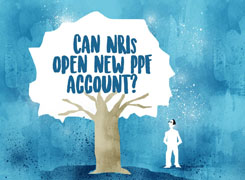I worked with American Express for 17 years . I want to know about EPFO . Is it different from PF or both are same ??
I did withdraw my PF but if EPFO is different from PF ... I want to know the process to withdraw the funds from EPFO and how we calculate and how much it be approximately
Ans: It’s great that you are thinking about your EPF and retirement savings.
Many working professionals get confused between PF and EPFO.
Let’s clear this step-by-step and cover everything you need to know.
? EPF and EPFO: What is the difference?
– EPF stands for Employees’ Provident Fund.
– EPFO stands for Employees’ Provident Fund Organisation.
– EPF is the actual retirement fund.
– EPFO is the government body that manages this fund.
– Think of EPF as your money.
– EPFO is the platform where it is held and managed.
– So both are connected but not the same thing.
– EPFO is like the bank, EPF is your savings in it.
? Is PF and EPF the same?
– Yes, in common use, PF and EPF usually mean the same thing.
– PF is a general term. EPF is the specific name under EPFO rules.
– If you had an EPF account, it was managed by EPFO.
– Some companies maintain PF privately, called exempted trusts.
– In such cases, EPFO does not directly manage your money.
– But if you were in a regular EPF account, it was with EPFO.
? You withdrew your PF: What does that mean?
– If you withdrew your full PF, then EPFO balance would be nil.
– Unless you worked in another company later and started new EPF.
– You can check EPFO passbook online to confirm balance.
– Visit: www.epfindia.gov.in and log in with your UAN.
– If passbook shows zero balance, no money is left.
– But if you had multiple EPF accounts, some balance may remain.
– Many people forget to merge old EPF accounts during job change.
? What if you suspect there’s still EPF balance left?
– Use your UAN (Universal Account Number) to check all EPF records.
– Login to: https://passbook.epfindia.gov.in/MemberPassBook/Login.jsp
– Use UAN and password (linked to your Aadhaar and mobile).
– You’ll see a list of all employers linked to your EPF.
– If balance shows in any account, you can withdraw it.
– If all balances are zero, withdrawal has already happened.
? How to withdraw EPF amount, if still available?
– You can apply online at www.epfindia.gov.in
– First, link your Aadhaar, PAN, and bank with UAN.
– Make sure KYC is complete. Mobile number should be active.
– Go to ‘Online Services’ → ‘Claim (Form-31, 19, 10C)’
– Select reason for withdrawal. Example: retirement, unemployment.
– Fill bank details, upload passbook copy.
– Verify through Aadhaar OTP and submit.
– Usually, amount is credited in 7–15 working days.
? How is the amount calculated?
– Your EPF balance has two parts: employee share and employer share.
– You contribute 12% of basic salary every month.
– Employer also contributes 12%, but some part goes to pension.
– Interest is added every year. Current EPF interest rate is 8.25%.
– The balance keeps growing with compounding interest.
– On withdrawal, you get full employee contribution with interest.
– You also get employer’s share (EPF part only), with interest.
– EPS (pension part) may not be withdrawn if you worked over 10 years.
? What if I worked over 10 years?
– You become eligible for pension under EPS.
– You can’t withdraw EPS corpus, but you can get monthly pension.
– To claim pension after 58, submit Form 10D via employer or EPFO.
? What if you worked less than 10 years?
– Then you can withdraw full EPF and EPS both.
– EPS withdrawal is lower as it earns no interest after exit.
– Use Form 10C to claim EPS amount if eligible.
? How much can I expect approximately?
– If you already withdrew full PF, balance will be zero.
– If not, check the EPF passbook to see the latest balance.
– Amount depends on your basic salary, years of service, and interest.
– For example, if monthly PF was Rs. 5,000 and you worked 10 years,
then rough EPF balance could be Rs. 9–10 lakhs or more, including interest.
– This is just indicative. Check passbook for real value.
? If passbook shows balance but claim fails?
– First, check if your KYC is updated.
– Bank account must be active and in your name.
– Aadhaar, PAN must be linked and verified.
– If UAN is not active, activate it using mobile OTP.
– For errors, raise grievance at: https://epfigms.gov.in/
– You can also visit local EPFO office with Aadhaar and UAN.
– Take employer’s help if claim is not processing.
? Keep these points in mind for EPFO claims
– PAN is needed to avoid higher TDS on early withdrawal.
– If service was less than 5 years, tax may apply on interest.
– After 5 years, withdrawal is fully tax-free.
– Don’t try to withdraw small balances multiple times.
– Instead, merge EPF accounts using UAN during job change.
? If you had multiple PF accounts in past
– Use UAN to link all old EPF numbers.
– Submit transfer request online through EPFO portal.
– This will combine balances in one account.
– Helps in getting correct final corpus and pension eligibility.
? For NRIs or people settled abroad
– You can still withdraw EPF fully.
– Update NRI bank account and KYC.
– Use OTP sent to Aadhaar-linked mobile in India.
– Or give power of attorney to someone in India.
– If mobile is not active, update through Aadhaar service center.
? Do not invest EPF withdrawals into insurance products
– Many people shift this money into traditional insurance plans.
– Avoid ULIPs or endowment policies promising returns and insurance.
– These offer poor liquidity and low post-tax returns.
– If you already invested in LIC or ULIP, consider surrendering.
– Reinvest proceeds in mutual funds through MFD with CFP credential.
– It helps track portfolio and get advice for long-term goals.
? Direct mutual funds may look cheaper but may hurt long term
– You miss professional guidance and risk assessment.
– Mistakes in fund choice, exit timing, or review can cost more.
– Regular plans through CFP-backed MFDs offer ongoing review.
– You get help in rebalancing, fund switch, tax planning.
– This support helps you grow corpus safely and steadily.
– Fees in direct funds may save 0.5–1%,
but wrong decisions can wipe 10–15% easily.
? Index funds are often marketed as easy tools
– But they lack active risk management.
– You ride the full market cycle up and down.
– No exit when valuations are stretched.
– No strategy for smallcap or sector allocation.
– Actively managed funds offer better downside protection.
– Skilled fund managers add value through smart allocation.
– Long term SIPs in quality active funds give more comfort and growth.
? Finally
– If you already withdrew PF, no need to worry.
– If not, check EPFO portal and initiate withdrawal.
– Consolidate all old accounts under one UAN.
– Ensure Aadhaar, PAN, bank and mobile are linked.
– If EPS pension is applicable, plan to claim it post 58.
– Avoid locking EPF money in poor-return products.
– Work with Certified Financial Planner through MFD route for better investing.
– Focus on long term wealth creation, not short-term returns.
Best Regards,
K. Ramalingam, MBA, CFP,
Chief Financial Planner,
www.holisticinvestment.in
https://www.youtube.com/@HolisticInvestment
























